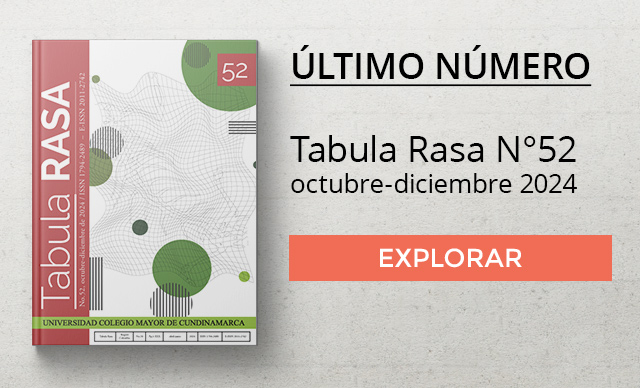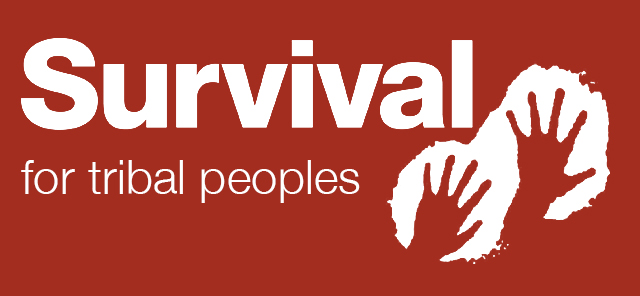Anthropology “Beyond the Human” —Dialogues and Coexistence Within Living Networks
Guest Editor:
David Figueroa Serrano
Universidad Autónoma del Estado de México
davdatura@hotmail.com
Anthropology, according to its historical definition, has taken as its object of analysis the universe that informs human relationships and culture. The scientistic and rationalist perspective that gave rise to this discipline during the nineteenth century emphasized an anthropocentric view, in which other elements of the environment were relegated to a secondary place in the anthropological narrative.
The growing interest in recent decades in the dynamics of interaction between humans and nonhumans, as well as in the forms of coexistence, is linked to questioning human being/nature and human/animal dualities as being part of exclusionary dichotomies in modern rationalism (Agamben, 1998, 2002; Derrida, 2008; Haraway, 2003, 2008, and others). These perspectives have emphasized that human coexistence is always entangled in relationships with non-human entities, as Haraway noted (2008). Thus, becoming is always becoming with, that is, a contact zone.
To a large extent, anthropological reflection in recent decades has drawn on post humanist and critical perspectives, on the becoming of entities (Deleuze & Guattari, 2004), on multispecies ethnography, and on contributions from research conducted in aboriginal community settings. These views have paved the way for questioning the ways of conceiving nature, the animal, and the human (Descola, 1996, 2001; Viveiros de Castro, 2002, 2004).
While these perspectives have revisited the reflection upon anthropocentrism, the ontological conditions of the human and the non-human, or the biopolitical exercise of division among these entities, other approaches seek to rethink anthropology toward an understanding “beyond human.” This is because, as Ingold (2013) stated, this field of study is defined not by its object, but by its way of working —learning through participation in other lives. The foundation of relationships among entities is more-than-human, since both human animals and other animal beings incorporate into their very constitution the principle of its relationship with an other (Ingold, 2000).
Ingold (2013a) holds that the key lies not in ethnography nor in a multispecific approach, but in an anthropology beyond the human, in which every living being is “fundamentally an event in the world.” This entails a shift that seeks to move beyond the ethnographic description of different biological presences on the same level, since the relational approach to human and animal becoming challenges the logic of the multispecies perspective.
For other authors like Eduardo Kohn (2013), the sense of an anthropology beyond the human lies in the signs shared among beings. Semiotics provides a foundation for its analysis, since it is in indexes (drawing from Peirce’s semiotics) where we can find the meanings that make possible to understanding the network of beings coexisting in an environment.
Kohn’s formulation bears a strong resemblance to the contributions made by biosemiotics and perhaps even more so to ecosemiotics. Since the 1960s, biosemiotics has emerged as a perspective seeking to understand life through its semiosis—that is, through the signs and codes that shape the informational systems of life. This approach is seen by some authors as a paradigm in which biology and semiotics converge to analyze the sign and semiotic networks within living systems (Barbieri, 2008).
A premise that has opened the field for reflection on the correlations and communicative possibilities between human and non-human entities is that mental phenomena also exist in animals. Therefore, cultural semiotics can be regarded as a means to understand these processes in other biological entities (Barbieri, 2007).
These dimensions open up the possibility of recognizing other conditions in the environment, through interwoven structures that take shape as thinking, feeling, and communicative entities giving room to an ethical perspective. Drawing on these formulations, it becomes necessary to rethink ecological codes so that the anthropological view of what lies beyond the human may adopt an open narrative—not only from the human narrative but also from other entities, from other narratives of nature, such as bionarratives.
With this call for papers, we invite researchers interested in addressing an anthropology beyond the human in theoretical or methodological approaches, or ethnographic experience reports to send their contributions aiming at enriching the interpretative exercise under this approach.
Contributions submitted are expected to fit one of the following thematic areas:
- Communicative and thinking spaces between human and nonhuman entities.
- Anthropology beyond the human and its links with ecosemiotic, hermeneutic, and other approaches.
- From multispecies to anthropology beyond the human. Reconfiguring the relationships between living beings.
- On thinking and feeling: correlates between human and nonhuman entities.
- The practice of anthropology beyond the human in settings dominated by modern rationalism.
References
Agamben, G. (2002). Lo abierto. El hombre y el animal. Adriana Hidalgo.
Agamben, G. (1998). Homo sacer I. El poder soberano y la nuda vida. Pre-textos.
Barbieri, M. (2008).Biosemiotics: A new understanding of life. Naturwissenschaften 95, 577–599. https://doi.org/10.1007/s00114-008-0368-x
Barbieri, M. (ed.) (2007). Introduction to biosemiotics. The new biological synthesis. Springer Nature.
Deleuze G. & Guattari, F. (2004). Mil mesetas. Capitalismo y esquizofrenia. Pre-textos.
Derrida, J. (2008). El animal que luego estoy si(gui)endo. Trotta.
Descola, P. (2001). Construyendo naturalezas. Ecología simbólica y práctica social. In P. Descola & G. Pálsson (Coords.), Naturaleza y sociedad. Perspectivas antropológicas (pp. 101–123). Siglo XXI Editores.
Descola, P. (1996). La selva culta. Simbolismo y praxis en la ecología de los achuar. Abya-Yala.
Haraway, D. (2008). When species meet. University of Minnesota Press.
Haraway, D. (2003). The companion species manifesto: Dogs, people, and significant otherness. Prickly Paradigm Press.
Kohn E. (2013). How forests think. Toward an anthropology beyond the human. University California Press.
Ingold, T. (2013). Anthropology beyond humanity. Suomen Antropologi: Journal of the Finnish Anthropological Society, 38(3), 5-23. https://anthropological.cloud/wau/wcaa/archive/downloads/wcaa/dejalu/feb_2015/ingold.pdf
Ingold, T. (2013a). Prospect. In T. Ingold & G. Pálsson (Eds.), Biosocial becomings: Integrating social and biological anthropology. Cambridge University Press.
Ingold, T. (2000). The perception of the environment: Essays on livelihood, dwelling and skill. Routledge.
Lien, M. E. & Pálsson, G. (2019). Ethnography beyond the human: The ‘other-than-human’ in ethnographic work. Ethnos. Journal of Anthropology, 86(1), 1–20. https://doi.org/10.1080/00141844.2019.1628796
Viveiros de Castro, E. (2004). Perspectivismo y multinaturalismo en la América indígena. In A. Surrallés & P. García (Ed.), Tierra adentro. Territorio indígena y percepción del entorno. Tarea Gráfica Educativa.
Viveiros de Castro, E. (2002). A inconstancia da alma selvagem e outros ensaios de antropología. Cosac & Naify.
For further information or to submit your complete manuscript along with an abstract (in English or Spanish), please write to: davdatura@hotmail.com
The deadline for submissions is March 1, 2026.
Any submission shall be unpublished, research-based, and compliant with Tabula Rasa’s guidelines.







